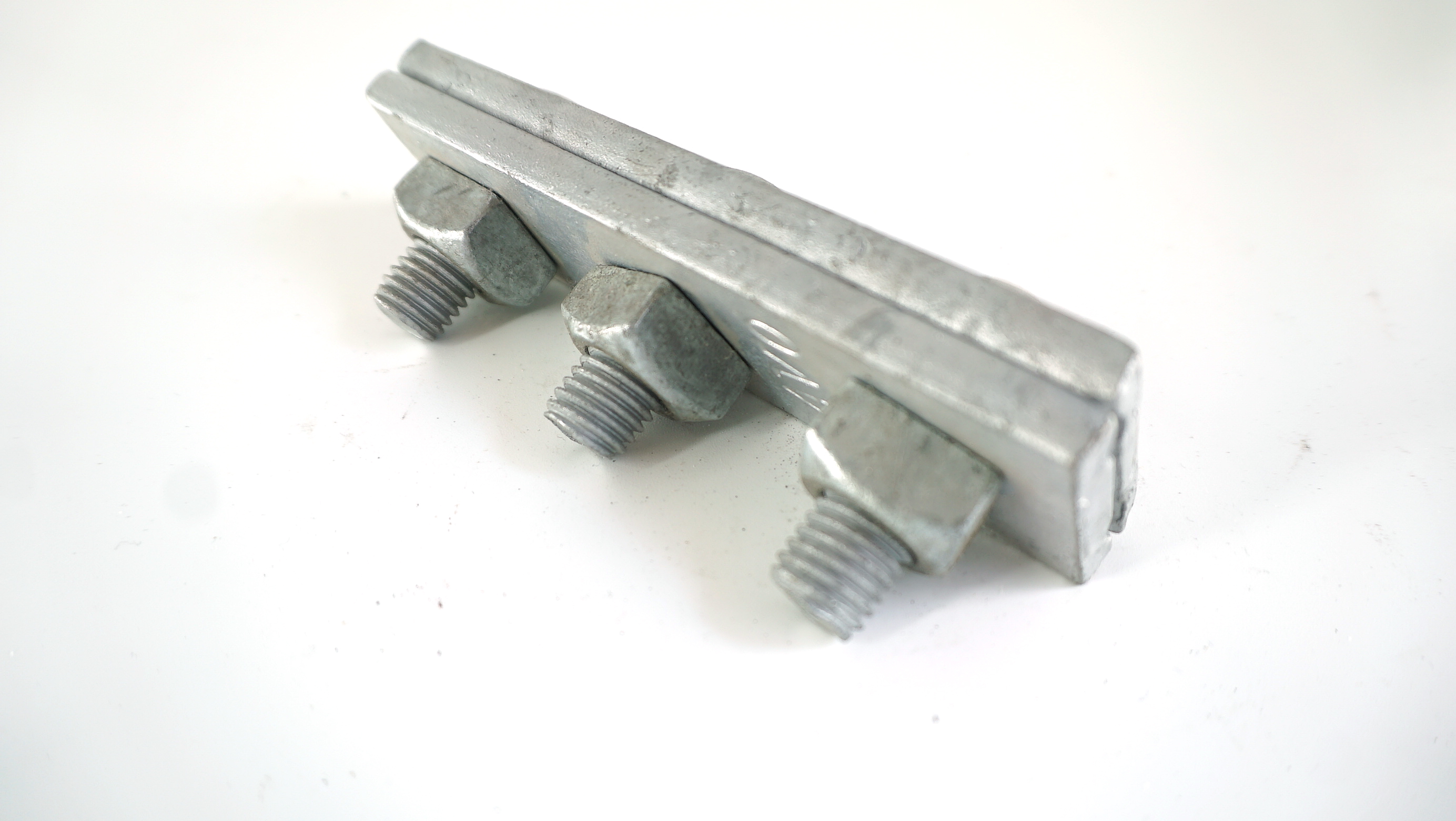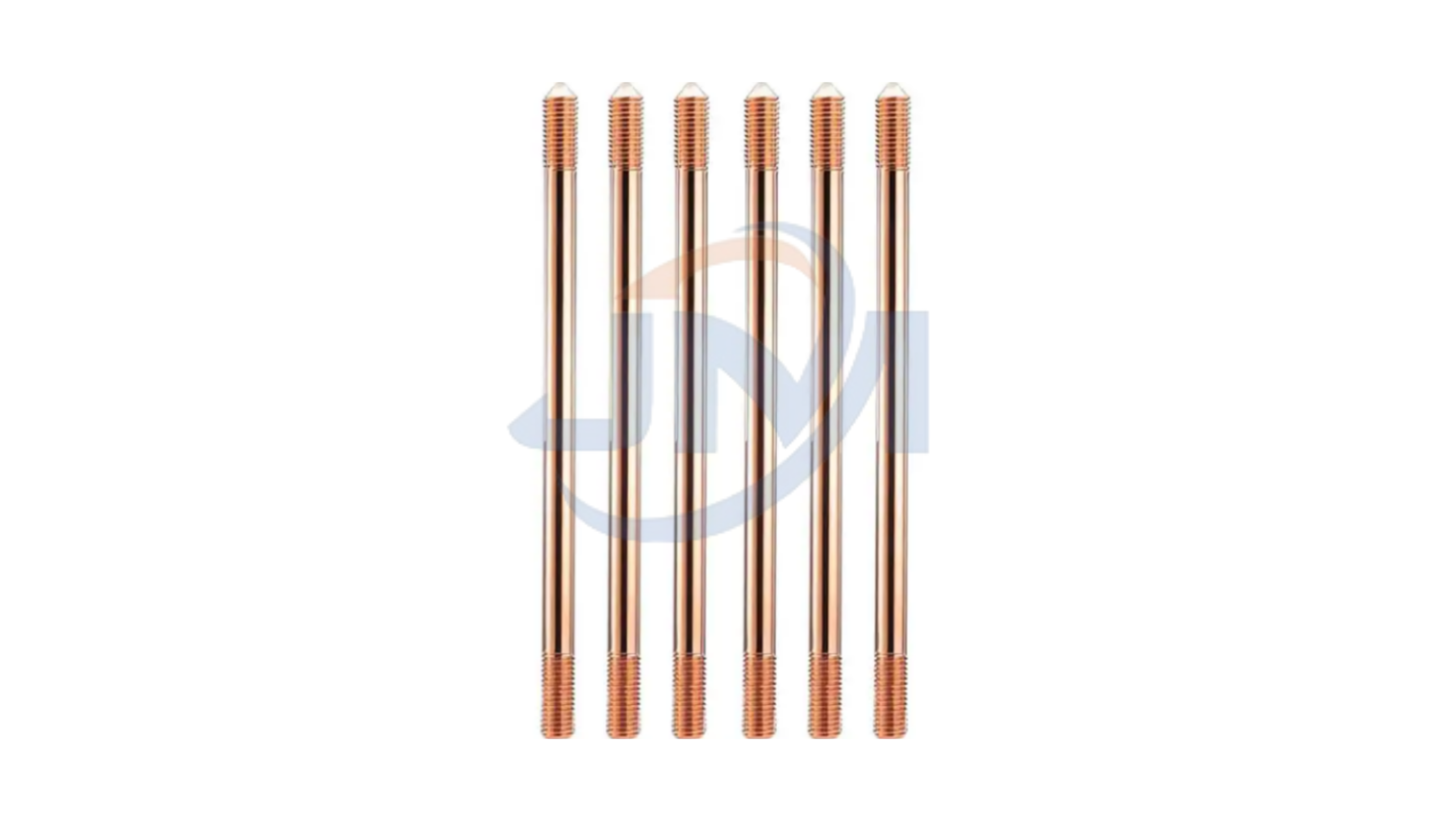Welcome to Handan Jinmai Power Line Accessories Manufacturing Co., Ltd.



Pigtail bolt
- Real manufacturers welcome on-site factory inspections.
- Professional customer service team to solve difficult problems for you.
- Processing and customization based on drawings, tailor-made for you.
Pigtail bolt: The Complete Guide
If you're looking for a comprehensive guide on pigtail bolts, here's an overview that covers various aspects of these fasteners.Pigtail bolts are a reliable and versatile fastening solution for a range of applications. Their unique design allows for secure attachment and support of various components, making them an essential tool in many industries.
| Material | Steel |
| Application | Overhead Line Accessories |
| Surface treatment | Hot Dip Galvanised |
| Size | Customized Size |
| Brand | JinMai |
| Packing | Wooden box/or woven bag + pallet |
| Sample | Provide Samples |
| Certificate | ISO9001 |
| Origin | China |
What are Pigtail Bolt?
Pigtail bolts, also known as pigtail hook bolts or pigtail eye bolts, are a type of fastener specifically designed for use in various construction and utility applications. They are characterized by their unique shape, which includes a threaded end and a looped or "pigtail" end that is formed by hot working the metal.

Pigtail bolt
Shape and Design: The threaded end of the pigtail bolt is typically used to secure it into a structure, such as a wooden or concrete pole, while the pigtail end is designed to hold or connect other components, such as dead-end clamps or suspension clamps. The loop can be closed or open, depending on the specific design.
Material: Pigtail bolts are commonly made from steel, which can be either carbon steel or stainless steel. Stainless steel bolts are used in environments where corrosion resistance is important.
Surface Treatment: Many pigtail bolts undergo a hot-dip galvanizing process, which coats the bolt with a layer of zinc. This treatment provides additional corrosion resistance and helps to prevent rust, making the bolts suitable for outdoor use in various weather conditions.
Strength and Durability: Pigtail bolts are designed to be strong and durable, with various strength ratings available (e.g., 70KN, 120KN, 180KN) to meet the requirements of different applications.
Applications: They are widely used in the telecommunications industry for hanging cables on power line poles, as well as in construction for securing signs, banners, and other structures. They can also be found in electrical installations, particularly for supporting and securing electrical equipment.
Customization: Pigtail bolts can be customized to specific lengths, thread sizes, and materials to fit the needs of a particular project.

Pigtail Bolt
Main Uses of Pigtail Bolt
Telecommunications: Pigtail bolts are used in the telecommunications industry for hanging and securing cables on utility poles. They provide a secure and reliable way to attach cables, ensuring that they are held firmly in place.
Electrical Installations: In electrical installations, pigtail bolts can be used to support and secure electrical equipment. They are particularly useful in outdoor applications where they need to withstand various weather conditions.
The versatility of pigtail bolts, with their strong and durable construction, makes them a valuable component in a wide range of applications where secure and reliable fastening is required.
Types of Pigtail Bolt
In the power industry, pigtail bolts are used for various applications, and there are several types that are commonly employed.
Export-Grade Power Hardware Pigtail Bolts: These bolts are designed to meet export standards and international market requirements. They may include hot-dip galvanization for enhanced corrosion resistance and adhere to specific international standards such as ANSI or DIN.
Wood Thread Pigtail Bolts: This type of pigtail bolt is designed for use with wood, such as in wooden utility poles or structures. They may feature wood threads to ensure a strong grip within the wooden structure.
Hot-Dip Galvanized Pigtail Hooks: Bolts with hot-dip galvanization provide an additional protective layer against rust and corrosion, which is particularly important for outdoor power facilities. These types of bolts may be used in applications where direct contact with soil is expected or in humid environments.
Special Bolts: The power industry may require specially designed pigtail bolts to meet specific installation needs. These special bolts may have non-standard head shapes, thread specifications, or performance grades.
Electrical Iron Hooks: This type of pigtail bolt may be used for connecting power lines or equipment, especially in situations where high strength and corrosion resistance are required.
Power Hardware: In power transmission and distribution systems, pigtail bolts may be part of power hardware used to secure and support conductors, insulators, and other electrical equipment.

pigtail bolt
Please note that these types may vary based on the specific application scenarios and design requirements. In practice, selecting the appropriate type of pigtail bolt requires consideration of factors such as material, size, strength grade, corrosion resistance, and the installation environment.
Technical Specification of Pigtail Bolt
Pigtail Pole Anchor Bolt (PB-16-300)
Used on wooden, concrete poles, or other power line poles.
Designed for hanging and tensioning low voltage dead end clamps or suspension clamps during electrical line constructions.
Pigtail Technical Specification (ZTT Pigtail 16-65332)
Used for hanging dead end clamps or suspension clamps on wooden poles, concrete poles, or power line poles.
May feature a welded square or round washer on the neck of the pigtail hook, depending on regional variations.
A complete set usually includes the pigtail hook main body, two hex nuts, and two washers.
Pigtail Eyebolt – Suspension Bolt (Duraset)
Threaded at one end for attachment of an expansion unit.
The other end is hot worked to form a pigtail eyebolt for suspension of various columns and electrical telephone cable.
These specifications provide a general overview of the types of pigtail bolts available, their applications, and the standards they adhere to. For a detailed and specific technical specification, it would be necessary to refer to the datasheet or product documentation provided by the manufacturer.
Type of Material
Finish:Corrosion is a major problem when it comes to materials like steel and iron.To solve this problem, hot dip galvanization or electro galvanization is done to the said material.
Material Type:The material used in making pigtail bolt is usually steel on many occasions but there are other materials too.The material is expected to be strong enough to withstand different weather conditions depending on the area it is used. Stainless Steel/Carbon Steel/Alloy Steel.
Material Grade: A2/A4//304/316/1010/1022/1035/Q195/Q215/Q235.
Surface Finishing: Plain/Black Oxide/Hot-DIP Galvanized/Blue/Clear/Ye.
Pigtail Bolt :The durability of the pigtail bolt depends on the material used so it has to be handled properly.(Handan Jinmai Power Line Accessories Manufacturing Co., Ltd.)
Tensile strength
Tensile strength is a critical property of materials, including pigtail bolts, and it refers to the maximum stress that a material can withstand while being stretched or pulled before breaking or failing.
For pigtail bolts, the tensile strength is determined by the material from which they are made and the manufacturing process.
When using pigtail bolts, it's also important to consider other factors such as the bolt's diameter, thread pitch, and the hardness of the material, as these can also affect the bolt's performance under load.
Quality compliance – ISO 1461
ISO 1461:2022 is an international standard that specifies the general properties of hot dip galvanized coatings and the test methods for these coatings applied to fabricated iron and steel articles, including certain castings. The standard is relevant for pigtail bolts that are galvanized as part of their manufacturing process to provide corrosion protection.
Here are some key points from ISO 1461:2022 that relate to quality compliance:
Scope: The standard applies to coatings applied by dipping fabricated iron and steel articles in a zinc melt containing not more than 2% of other metals. It does not apply to continuously hot dip galvanized sheet, wire, woven or welded mesh products, tube and pipe hot dip galvanized in automatic plants, or products for which specific standards exist.
General Requirements: The standard outlines the requirements for the appearance, thickness, adhesion, and other properties of the galvanized coating. It also provides guidelines for the renovation of uncoated or damaged areas.
Coating Thickness: The standard specifies the minimum coating thickness required for various categories of galvanized items. The thickness is a critical factor in ensuring the corrosion resistance of the galvanized coating.
Coating Appearance: The standard describes the acceptable appearance of the galvanized coating, which should be smooth, uniform, and continuous. It also addresses various defects that can occur during the galvanizing process and their acceptability.
Adhesion: The standard includes requirements for the adhesion of the galvanized coating to the steel substrate, which is essential for the coating's protective performance.
Acceptance Criteria: ISO 1461:2022 provides criteria for accepting or rejecting galvanized products based on the coating's properties and any defects present.
Sampling and Inspection: The standard references other ISO documents, such as ISO 2859, for sampling procedures and inspection by attributes, which are used to determine the quality of the galvanized coating.
Safety and Process Requirements: Annex B of the standard provides safety and process requirements for hot dip galvanizing, ensuring that the process is carried out in a manner that meets quality standards.
Declaration of Compliance: The standard requires a declaration of compliance, which means that manufacturers must provide evidence that their products meet the specified requirements.
For pigtail bolts and other galvanized products, compliance with ISO 1461:2022 ensures that the galvanized coating is of high quality and provides the necessary protection against corrosion. Manufacturers and inspectors should be familiar with the standard's requirements to ensure that products meet the specified quality levels.
Dimension
The dimensions of a pigtail bolt can vary significantly based on the specific application and the manufacturer's design. However, there are some common dimensions that are typically included in the specifications of such bolts. Here are some general dimensions you might expect for a pigtail bolt:
Diameter: The diameter of the bolt's threaded shank is a critical dimension. Common diameters for pigtail bolts can range from a few millimeters (e.g., M6, M8, M10, M12) to several centimeters, depending on the load-bearing requirements.
Thread Pitch: The thread pitch (distance between threads) is determined by the bolt's diameter and is essential for proper engagement with nuts or other threaded components.
Length: The overall length of the bolt, including the threaded shank and the pigtail loop, can vary. The length is chosen based on the thickness of the material being fastened and the required projection of the pigtail loop.
Pigtail Loop Size: The size of the loop (also known as the eye or tail) can be specified in terms of its diameter or the distance between the inner and outer edges of the loop.
Thread Length: This is the portion of the bolt that is threaded, and it can be a fixed length or variable depending on the application.
Head Dimensions: If the bolt has a head (e.g., hex head, socket head), the dimensions of the head, including its width and height, are also specified.
Corrosion Protection: The thickness of any applied coatings, such as zinc from hot-dip galvanizing, is also a dimension that can be specified.
Tolerances: Manufacturing tolerances for dimensions are also provided to ensure consistency and quality control.
For precise dimensions, it's essential to refer to the manufacturer's datasheet or product specifications for the specific pigtail bolt in question. These documents will provide detailed measurements and tolerances to ensure that the bolts are suitable for their intended use. In the power industry, for example, pigtail bolts used for hanging electrical cables on poles may have specific dimensions to accommodate the weight and tension of the cables and the design of the pole hardware.
The process of Making a pigtail bolt
The process of making a pigtail bolt involves several steps, from material selection to the final inspection. Here's a general outline of the manufacturing process:

pigtail bolt
Material Selection: The first step is choosing the appropriate material for the bolt. Common materials include various grades of steel, such as carbon steel, stainless steel, or alloy steel, depending on the required strength, durability, and environmental conditions.
Cutting: The raw material, typically a rod or bar, is cut into the desired length for the bolt.
Threading: The cut rod is then threaded. This can be done using a die or a thread rolling process, which creates the screw threads along the length of the rod. The thread pitch and diameter are determined by the bolt's specifications.
Pigtail Formation: After threading, the rod is processed to form the pigtail loop. This is usually done through a hot-working process where the end of the bolt is heated and then bent into a loop shape. The loop can be closed or open, depending on the design requirements.
Heat Treatment: To achieve the desired mechanical properties, such as tensile strength and hardness, the bolts may undergo heat treatment processes like quenching and tempering.
Galvanizing or Coating: To protect the bolt from corrosion, it may be coated with a layer of zinc through a process called hot-dip galvanizing. This involves dipping the bolt into molten zinc. Alternatively, other coatings like paint or powder coating can be applied for corrosion protection.
Inspection and Quality Control: Each bolt is inspected for dimensions, thread quality, pigtail shape, and coating integrity. This may involve visual inspection, measuring with calipers or thread gauges, and testing for tensile strength and corrosion resistance.
Packaging: Once the bolts pass the quality control checks, they are packaged for distribution. They may be bundled, bagged, or boxed, depending on the manufacturer's packaging standards.
Final Inspection and Documentation: Before shipment, a final inspection may be conducted, and documentation such as certificates of compliance with standards like ISO 1461 for galvanized bolts may be prepared.
The manufacturing process for pigtail bolts can vary slightly between different manufacturers and depending on the specific application requirements. However, the steps outlined above provide a general idea of how these bolts are produced.
How to Install Pigtail bolt?
Installing a pigtail bolt typically involves the following steps:
Preparation: Before installing the pigtail bolt, ensure that the surface where it will be installed is clean, dry, and free of any debris. If the bolt is to be installed outdoors, consider using a weather-resistant or stainless steel bolt to prevent corrosion.
Marking the Position: Determine the exact location for the pigtail bolt. Use a tape measure and a level to mark the spot accurately. If the bolt is part of a larger assembly, ensure that the position aligns with the other components.
Drilling the Hole: Drill a hole at the marked position. The hole should be slightly smaller than the diameter of the threaded shank of the pigtail bolt to ensure a tight fit. For example, if the bolt has a diameter of M10, you might drill a hole with a slightly smaller diameter, such as 9.5mm.
Inserting the Bolt: Insert the threaded shank of the pigtail bolt into the drilled hole. If the hole is the correct size, the bolt should fit snugly.
Securing the Bolt: Tighten the bolt using a wrench or a screwdriver, depending on the type of bolt head. For outdoor applications or areas prone to vibration, consider using a lock washer or a thread-locking compound to prevent the bolt from loosening over time.
Attaching the Pigtail Loop: Once the bolt is securely in place, you can attach the components that will be connected to the pigtail loop. This could be a clamp, a hook, or another piece of equipment, depending on the application.
Final Check: After everything is connected, give the assembly a gentle tug to ensure that the pigtail bolt is holding securely. If there is any movement, tighten the bolt further or check for any issues with the installation.
Maintenance: Periodically inspect the pigtail bolt to ensure it remains secure and free from corrosion. If the bolt shows signs of wear or corrosion, it may need to be replaced.
Remember, the specific installation process may vary depending on the type of pigtail bolt and the application. Always refer to the manufacturer's instructions for the most accurate and safe installation method.
Frequently Asked Questions (FAQs)
Conclusion
Pigtail bolts play a crucial role in the stability and construction of various structures we encounter in our everyday lives.
Their secure installation is essential and should be given due importance.
Should the need arise to replace a pigtail bolt, it is advisable to seek the expertise of a professional.
A wide array of these bolts is accessible in the market, allowing consumers to select the most suitable options for their needs.
Customers also have the option to customize their requirements, with the flexibility to specify the exact type of product they desire.
Jinmai Fastener stands out as a manufacturer that embraces customer-specific designs and is ready to tailor their fabrication services accordingly.






